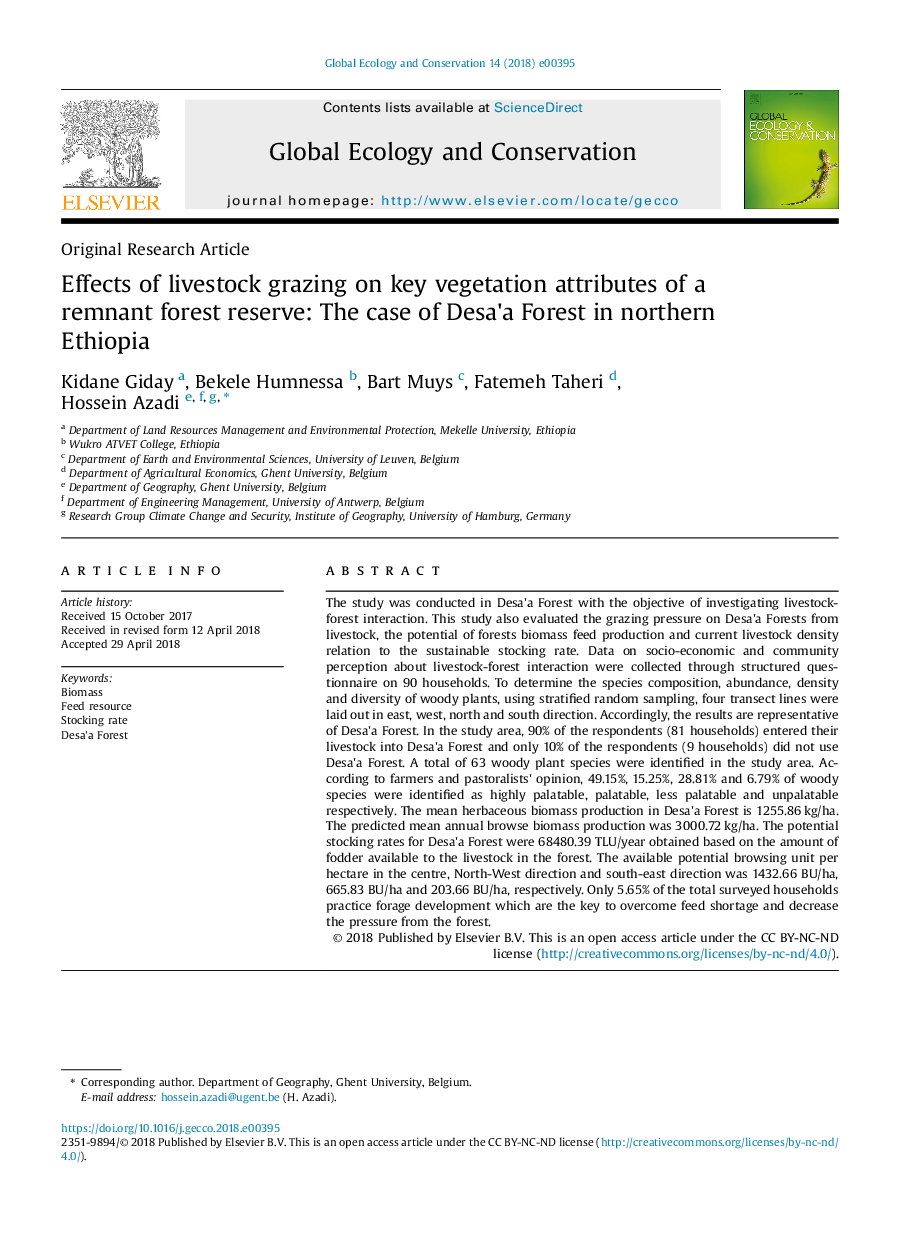| کد مقاله | کد نشریه | سال انتشار | مقاله انگلیسی | نسخه تمام متن |
|---|---|---|---|---|
| 8846218 | 1617653 | 2018 | 14 صفحه PDF | دانلود رایگان |
عنوان انگلیسی مقاله ISI
Effects of livestock grazing on key vegetation attributes of a remnant forest reserve: The case of Desa'a Forest in northern Ethiopia
ترجمه فارسی عنوان
تأثیر حراجی دام در ویژگی های گیاهی اصلی ذخایر جنگلی باقی مانده: مورد جنگل دزا در شمال اتیوپی
دانلود مقاله + سفارش ترجمه
دانلود مقاله ISI انگلیسی
رایگان برای ایرانیان
کلمات کلیدی
زیست توده، منبع تغذیه، نرخ جابجایی، جنگل دسا،
موضوعات مرتبط
علوم زیستی و بیوفناوری
علوم کشاورزی و بیولوژیک
بوم شناسی، تکامل، رفتار و سامانه شناسی
چکیده انگلیسی
The study was conducted in Desa'a Forest with the objective of investigating livestock-forest interaction. This study also evaluated the grazing pressure on Desa'a Forests from livestock, the potential of forests biomass feed production and current livestock density relation to the sustainable stocking rate. Data on socio-economic and community perception about livestock-forest interaction were collected through structured questionnaire on 90 households. To determine the species composition, abundance, density and diversity of woody plants, using stratified random sampling, four transect lines were laid out in east, west, north and south direction. Accordingly, the results are representative of Desa'a Forest. In the study area, 90% of the respondents (81 households) entered their livestock into Desa'a Forest and only 10% of the respondents (9 households) did not use Desa'a Forest. A total of 63 woody plant species were identified in the study area. According to farmers and pastoralists' opinion, 49.15%, 15.25%, 28.81% and 6.79% of woody species were identified as highly palatable, palatable, less palatable and unpalatable respectively. The mean herbaceous biomass production in Desa'a Forest is 1255.86â¯kg/ha. The predicted mean annual browse biomass production was 3000.72â¯kg/ha. The potential stocking rates for Desa'a Forest were 68480.39 TLU/year obtained based on the amount of fodder available to the livestock in the forest. The available potential browsing unit per hectare in the centre, North-West direction and south-east direction was 1432.66 BU/ha, 665.83 BU/ha and 203.66 BU/ha, respectively. Only 5.65% of the total surveyed households practice forage development which are the key to overcome feed shortage and decrease the pressure from the forest.
ناشر
Database: Elsevier - ScienceDirect (ساینس دایرکت)
Journal: Global Ecology and Conservation - Volume 14, April 2018, e00395
Journal: Global Ecology and Conservation - Volume 14, April 2018, e00395
نویسندگان
Kidane Giday, Bekele Humnessa, Bart Muys, Fatemeh Taheri, Hossein Azadi,
